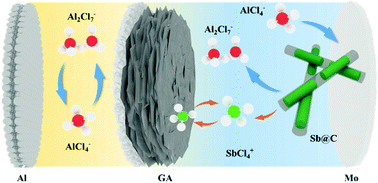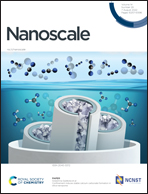A core–shelled Sb@C nanorod cathode with a graphene aerogel interlayer for high-capacity aluminum ion batteries†
Abstract
Rechargeable aluminum-ion batteries, RAIBs, as a prime candidate for next-generation batteries, have attracted much attention due to their extremely high anode capacity and good safety. However, the lack of matching high-capacity cathode materials and reasonable design limit their practical development. Herein, core–shelled Sb@C nanorods are prepared by polymer coating and thermal reduction as a metal-based cathode for RAIBs. The carbon shell and graphene aerogel interlayer effectively block the diffusion and shuttling of charging products, thus exhibiting excellent electrochemical performance. This Al–Sb battery delivers an initial discharge capacity of 656 mA h g−1 at 100 mA g−1, a stable discharge voltage of 0.9 V, and excellent cycling stability maintained at 306 mA h g−1 after 500 cycles at 1 A g−1. Serial characterizations are used to monitor the structural changes of Sb in reversible reactions and to determine the configuration of the charged products, showing that the product exists in the form of [SbCl4]+ cations, that is, a five-electron transfer reaction occurs with a very high theoretical capacity (1100 mA h g−1). This study sheds light on the energy storage mechanism of a metallic Sb cathode in RAIBs, and provides new insights into the study of high-capacity cathodes and the rational design of battery structures.



 Please wait while we load your content...
Please wait while we load your content...